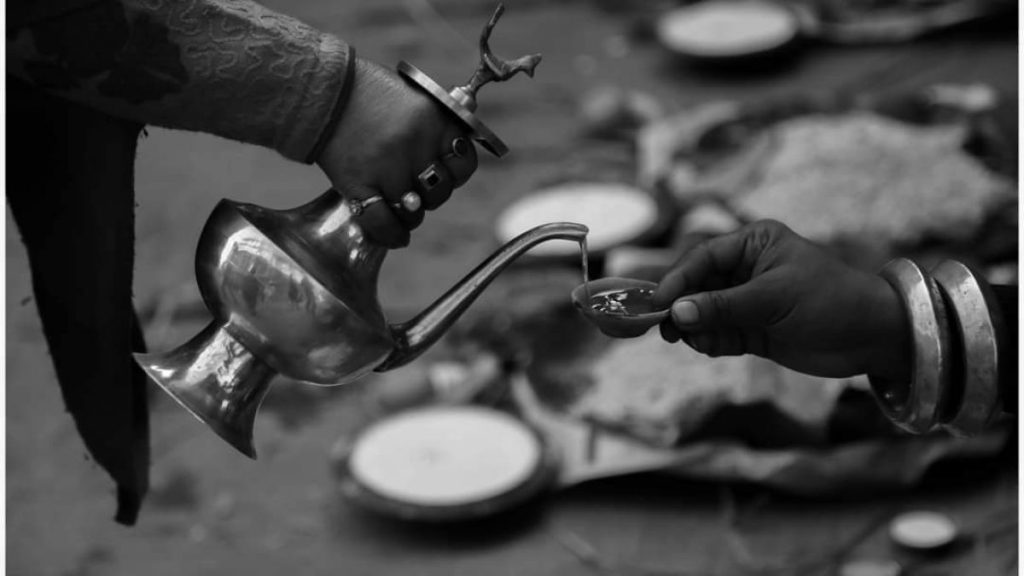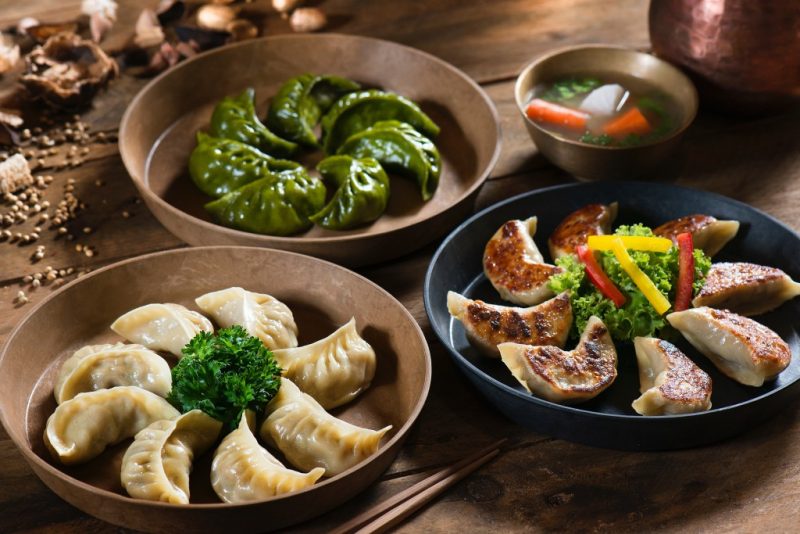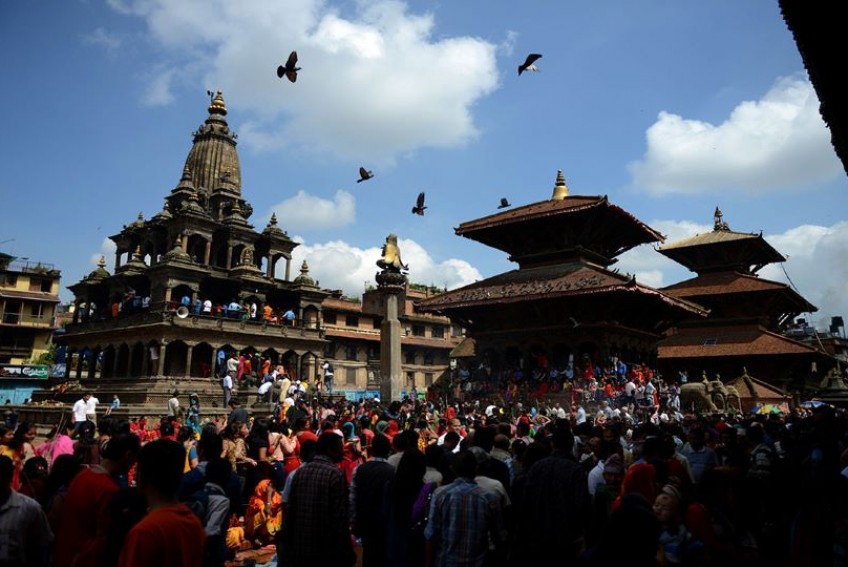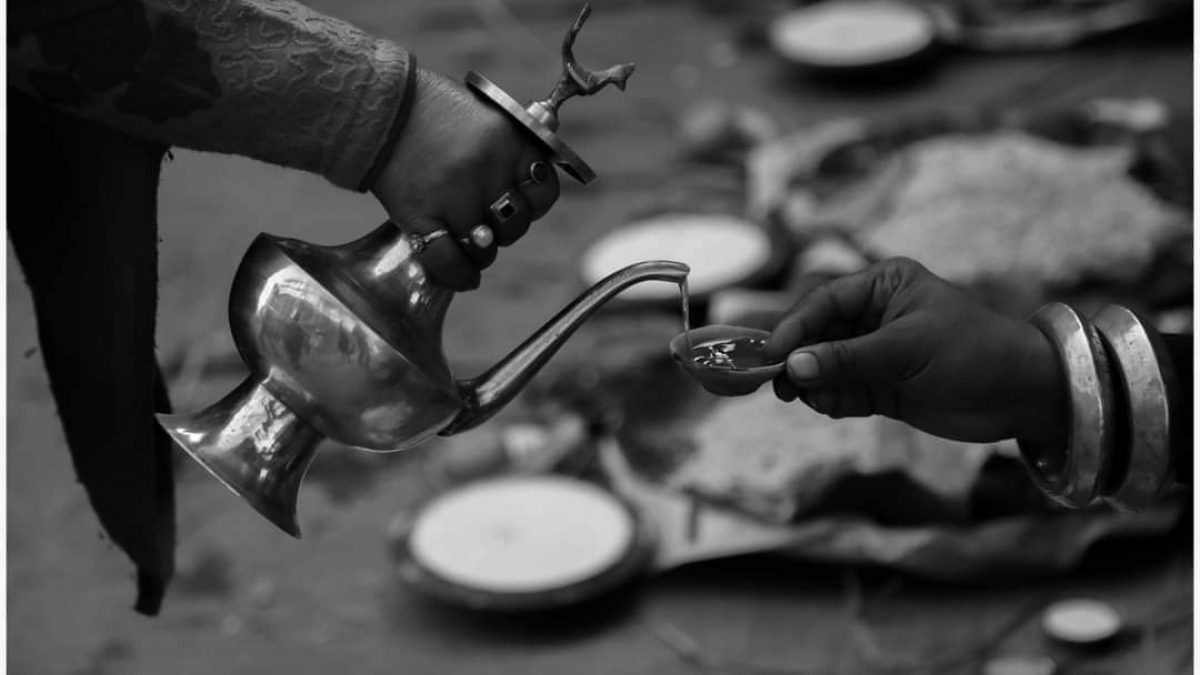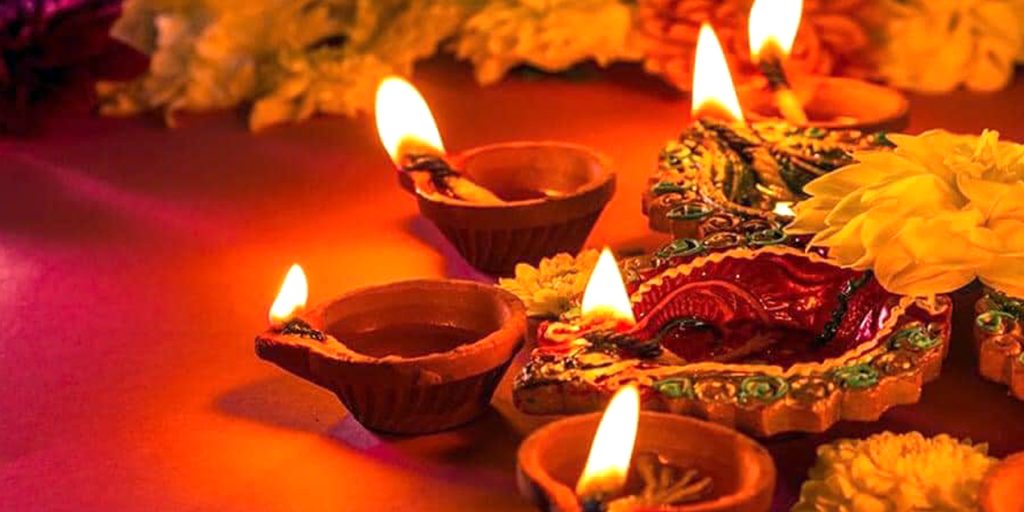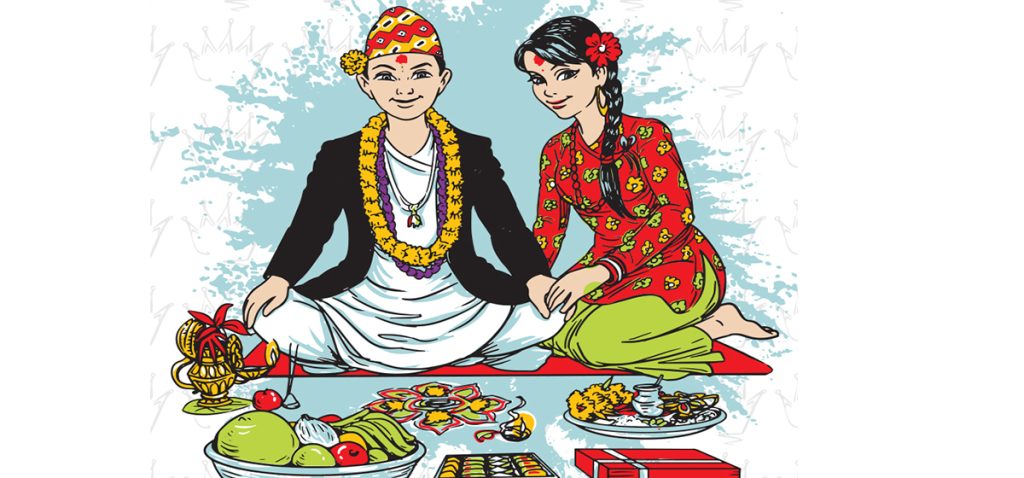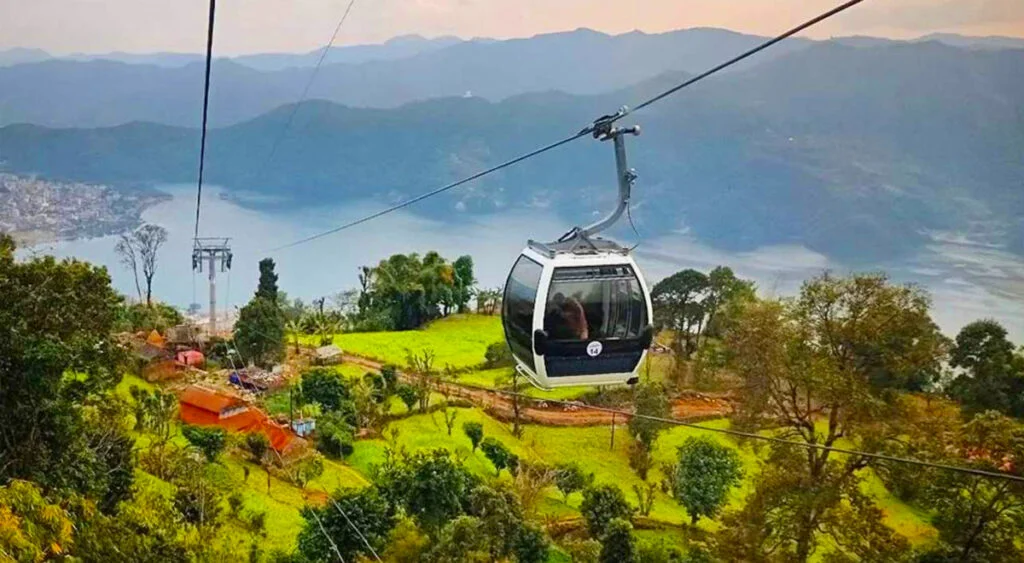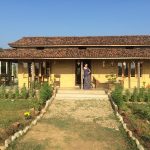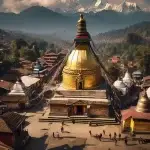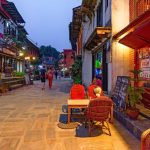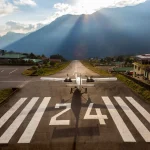Now Reading: Tihar: Nepal’s Festival of Lights and Harmony
-
01
Tihar: Nepal’s Festival of Lights and Harmony
Tihar: Nepal’s Festival of Lights and Harmony
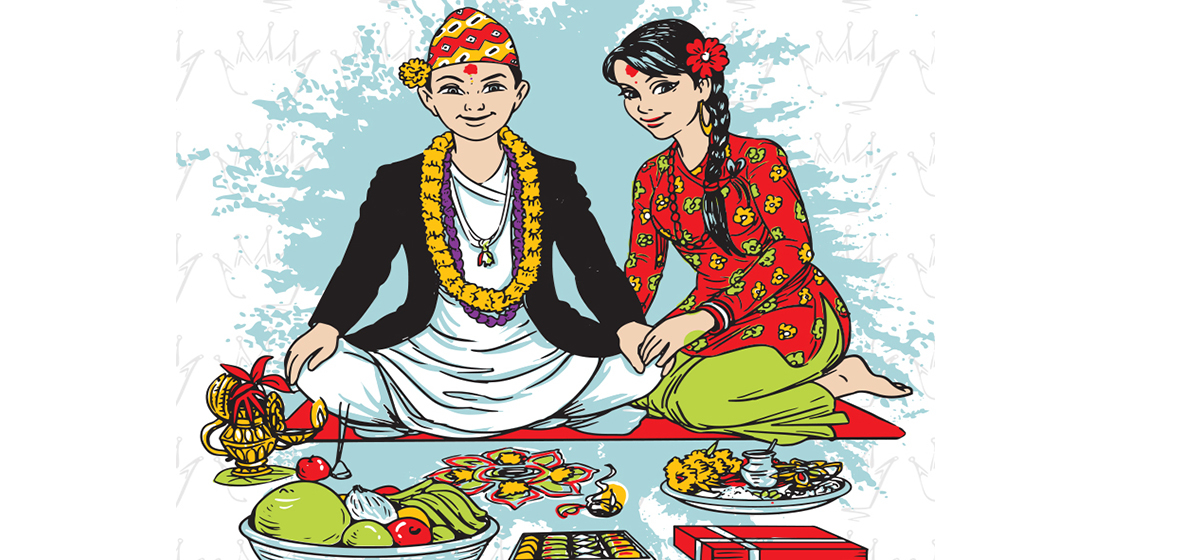
If Dashain is Nepal’s grand homecoming, Tihar is its tender afterglow, five luminous days when homes glitter with oil lamps, doorways bloom with marigolds, and songs ripple through neighbourhoods well past dusk. Known elsewhere as Deepawali/Diwali, Tihar in Nepal carries a distinctive flavour: it honours not just gods and people, but also animals and the everyday bonds that keep communities whole. From feeding crows to garlanding dogs, from drawing intricate rangoli to the moving Bhai Tika ritual, Tihar is a celebration of light, gratitude, and harmony.
What makes Tihar uniquely Nepali?
Tihar’s heart is balanced between nature and humans, devotion and joy, stillness and music. Each day spotlights a relationship: with messengers of the natural world (crows, dogs, cows, oxen), with prosperity (Goddess Lakshmi), with community (the Deusi–Bhailo tradition of song and dance), and with family (siblings in Bhai Tika). Newar communities also observe Mha Puja, a beautiful self-purification rite and celebrate Nepal Sambat New Year during the festival.
The Five Days of Tihar
Day 1: Kaag Tihar (Crow Day)
Crows, considered messengers, are offered grains and sweets on rooftops and courtyard walls. It’s a gentle reminder to respect all creatures and to begin the festival by appeasing harbingers of news, good or bad.
What to notice: Morning offerings on leaf plates, children giggling as crows flutter down, and early rangoli outlines taking shape by the threshold.
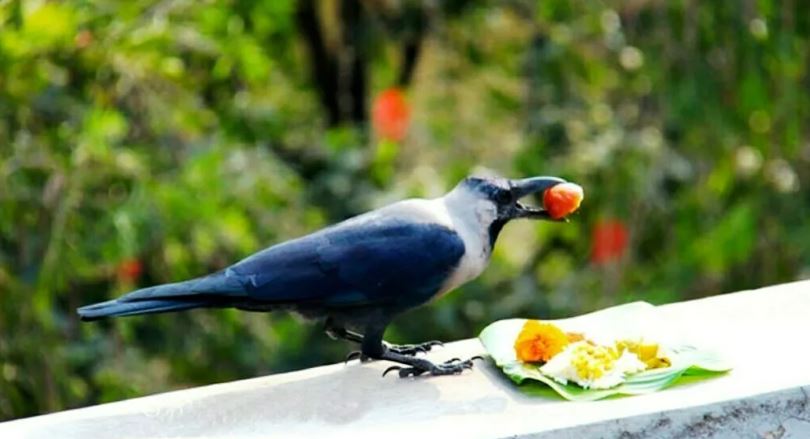
Day 2: Kukur Tihar (Dog Day)
Perhaps Tihar’s most photographed moment. Dogs, pets and strays alike receive tika (vermillion mark), mala (marigold garland), and treats in gratitude for their loyalty and protection. Streets glow with orange garlands and wagging tails.
What to notice: Respectful handling of animals, water bowls placed outside homes, and volunteers garlanding community dogs.
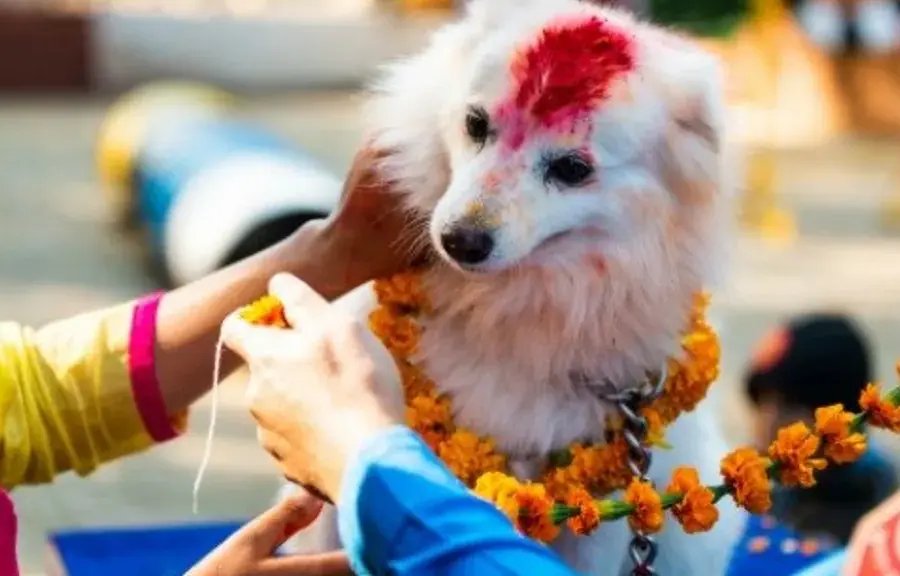
Day 3: Gai Tihar & Lakshmi Puja (Cow Day & Goddess of Wealth)
At dawn, cows, the symbol of abundance, are honoured. By evening, homes erupt in light for Lakshmi Puja. Doorways are traced with rice-flour footsteps inviting Lakshmi, rangoli bloom in colour, and rows of diyo (clay oil lamps) flicker across windowsills and balconies.
What to notice: The hush just after sunset as lamps are lit, the fragrance of incense and marigolds, and doorways lined with colourful mandalas.
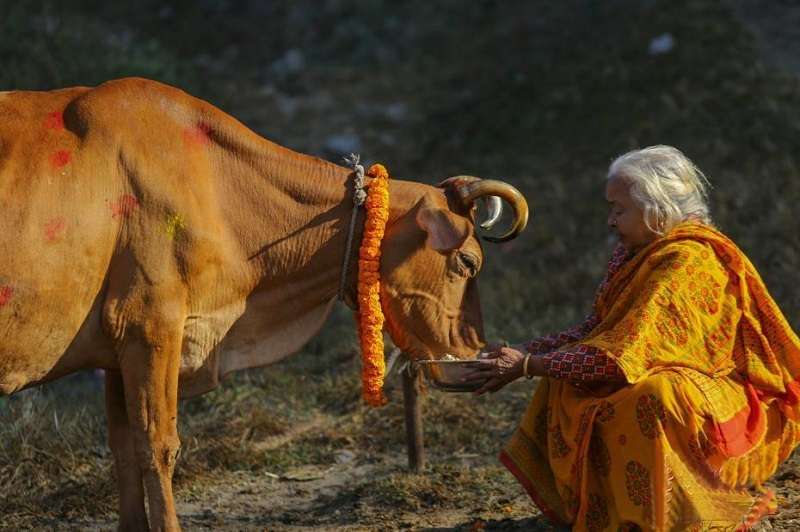
Day 4: Goru Tihar / Govardhan Puja & (for Newars) Mha Puja
Oxen are honoured for their labour in the fields. Many households sculpt a small Govardhan mound of dung or clay, decorated and worshipped to thank the earth’s bounty. In the evening, Newar families perform Mha Puja “worship of the self” sitting before exquisitely arranged mandala patterns made of coloured powders, lentils, and flower petals. It coincides with the Nepal Sambat New Year, adding a special festive uplift.
What to notice: Calm, contemplative rituals, symmetrical mandalas glowing by lamplight, and trays holding sagun (auspicious foods like egg, fish, ginger, yoghurt).
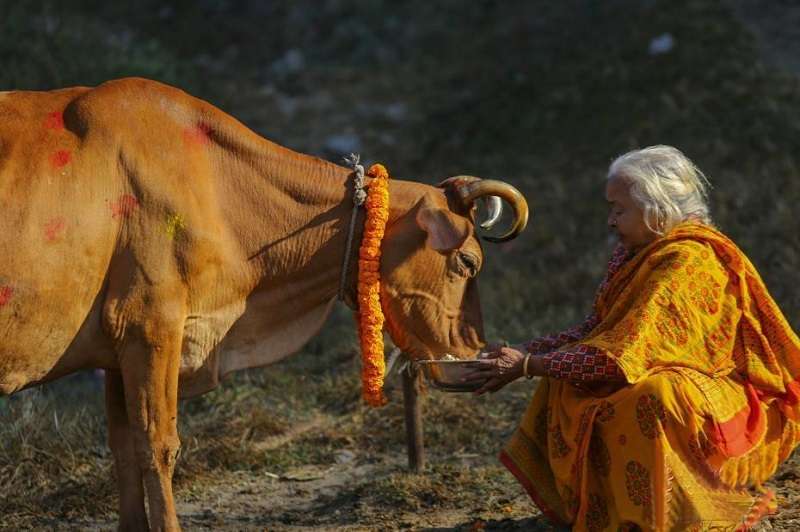
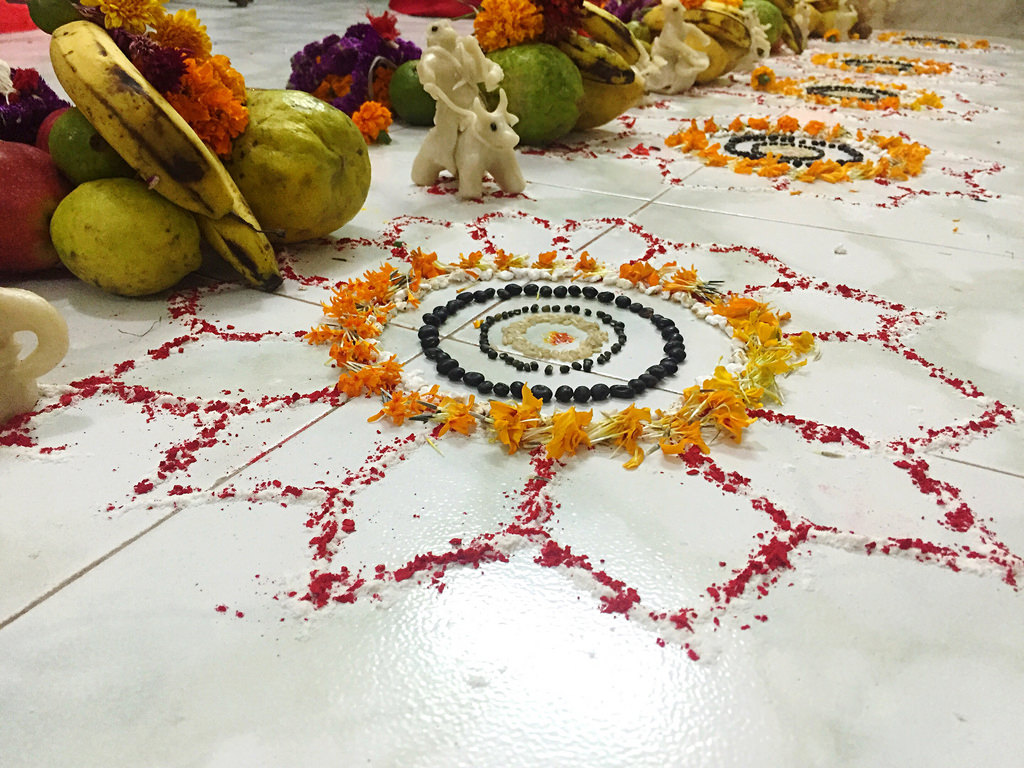
Day 5: Bhai Tika (Brother–Sister Day)
The festival culminates in a moving ceremony celebrating the bond between brothers and sisters (and often cousins or dear friends who share sibling-like ties). Sisters apply a seven-colour tika to brothers’ foreheads, offer sel roti, fruits, and nuts, and pray for their long life; brothers gift clothing or tokens and pledge lifelong protection. Families feast, laugh, and linger.
What to notice: The seven-hued tika, meticulously arranged gift trays, and the unmistakable warmth that fills living rooms.
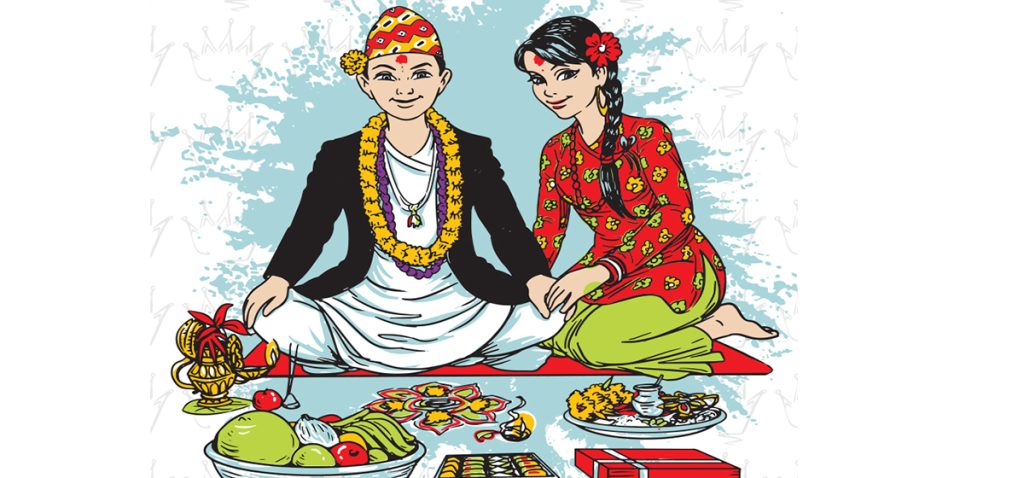
Sounds, flavours, and colours of Tihar
Deusi–Bhailo: After dusk, groups of youths and neighbours go house to house singing traditional Deusi (often on Lakshmi Puja night) and Bhailo (commonly on the preceding or following nights), dancing and blessing homes. In return, householders offer sweets, fruit, or small donations. It’s communal joy in motion.
Rangoli & lights: Patterns in crushed stone, rice flour, and petals spill across thresholds. Oil lamps cast soft, amber halos; fairy lights twine around balconies and alleyways.
Festive foods: Expect crisp, ring-shaped sel roti frying in big iron pans; anarsa/anarsha (sweet rice-based treats), fini roti, khajuri, savoury achaar, and fruit platters. Tea keeps the conversations going late into the night.
How to experience Tihar respectfully (for visitors)
- Ask before photographing people and private rituals, most families will happily say yes and even offer a sweet or two.
- Offerings etiquette: If you’re invited to watch a puja, remove shoes, keep a respectful distance, and follow your host’s lead.
- Deusi–Bhailo: If a group performs at your door or homestay, step outside, smile, and give what you can; coins or notes are appreciated, as are sweets or fruit.
- Be animal-kind: Don’t feed dogs chocolate or spicy foods. Fresh water, plain biscuits, or dog treats are safest.
- Light with care: If lighting diyo, secure them on flat surfaces away from fabrics or paper; never leave them unattended.
- Dress festive, modest: A kurta or shawl feels right; bright colours blend beautifully with the season.
When and where to go
Tihar follows the lunar calendar and usually falls in late October or early November. The mood is contagious across Nepal, but for vivid experiences, try:
- Kathmandu Valley (Ason, Patan, Bhaktapur): Densely lit courtyards, ornate Newar Mha Puja, bustling Deusi–Bhailo.
- Pokhara: Lakeside reflections of lamps and lights, lively music after dusk.
- Villages (anywhere from the Terai to the hills): Slower pace, heartfelt hospitality, star-filled skies over flickering diyos.

